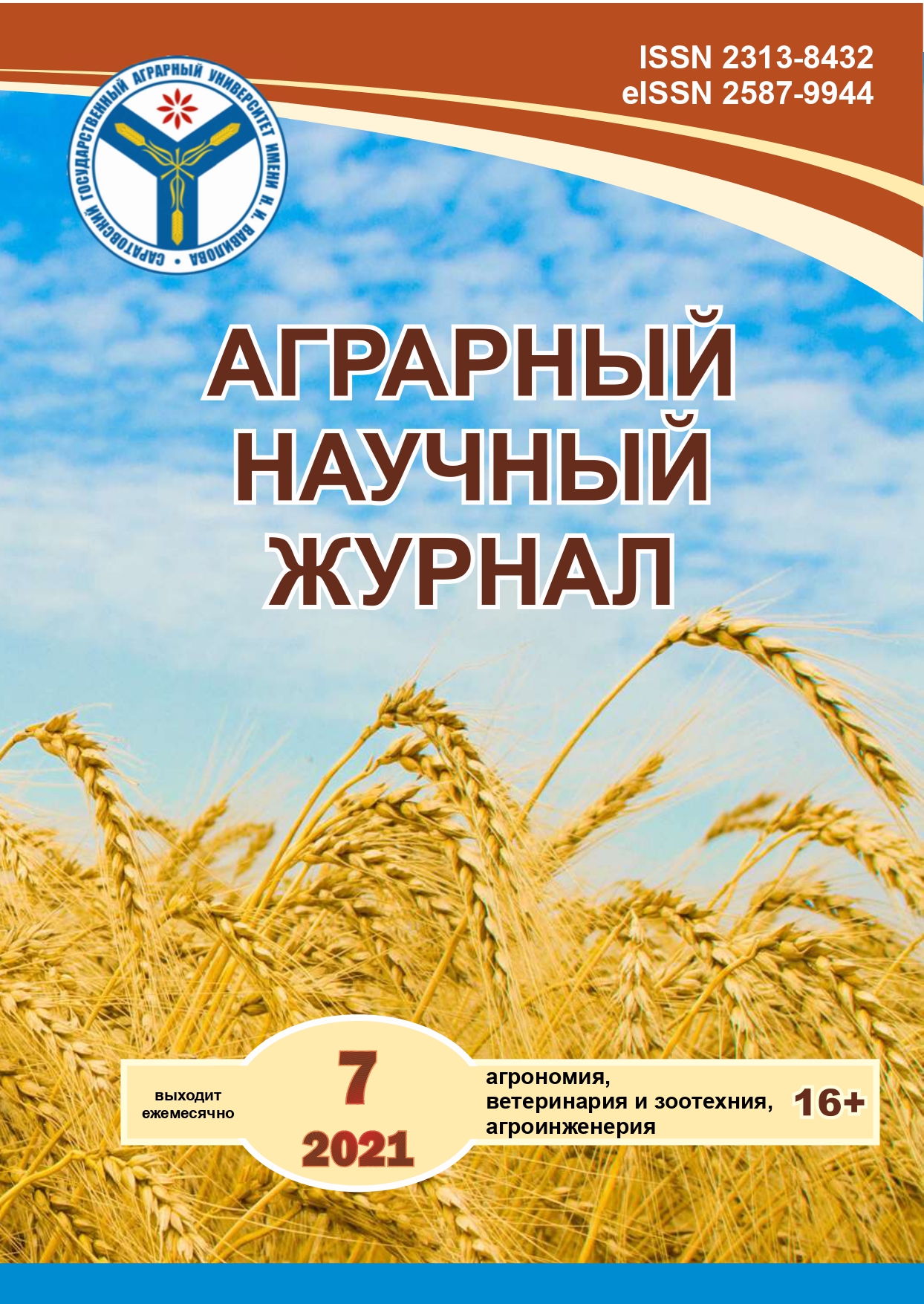Grain quality of winter triticale varieties selected by the Samara Research Institute of Agri-cultural Sciences
DOI:
https://doi.org/10.28983/asj.y2021i7pp4-8Keywords:
triticale, variety, line, quality, amino acid compositionAbstract
The article presents the results of studies to identify the influence of abiotic factors on the grain quality of varieties and lines of winter triticale of the Samara Research Institute of Agricultural Sciences for 2017-2020, in comparison with varieties of winter rye and wheat. The studied crops were cultivated in the fields of the institute, located in the black earth steppe of the Middle Volga region. Technological properties were determined in the laboratory of the technical and analytical service of the Samara NIISH and at the Faculty of Technology of the Samara State Agrarian University according to standard generally accepted methods. The data obtained indicate a higher productivity of modern triticale varieties, compared to rye and wheat. In terms of grain quality, these varieties and lines are superior to winter rye varieties and are not inferior to wheat. On average, over 4 years, the content of HAC in triticale varieties was (1.09-1.51 mp · S), with a variation by year, depending on climatic conditions from 0.90-1.53 mp · S in 2017 to 1.01-1.59 mp · S in 2018. It was revealed that the varieties Krokha and Arcturus were distinguished by the fat content of 1.81-1.85 %, the variety Spika and liniya 9385-4/14 1,72-1,75% – by ash content. In terms of the content of almost all amino acids, the grain of the 830-4/13 line was superior to the rest of the studied samples. The amount of protein in the grain varied from 11.7 to 15.6% over the years, and fat from 0.61 to 2.55%. A high yield relationship was observed with the content of pentosans r=-0.82±0.08, arginine r=-0.72±0.12, with the mass of 1000 grains r=0.67±0.14, histizine r=0.61±0.16, leucine r=-0.69±0.13, sodium content r=0.86±0.06, and depended on the amount of precipitation in April r=0.81±0.08. The necessity of analyzing the amino acid composition of triticale grain to determine its biological value is justified
Downloads
References
Аленин П.Г., Кухарев О.Н., Кшникаткин С.А. Ресурсосберегающие адаптивные приёмы в технологии возделывания зерновых культур // Вестник Ульяновской государственной сельскохозяйственной академии. – 2017. – № 2(38). – С. 6–14.
Быков И.В., Гансбургский А.Н. Гигиена физической культуры и спорта: учебник. – СПб: изд-во СпецЛит, 2010. – 192 с.
Гончаренко А.А. Современные возможности улучшения качества зерна озимой ржи методами селекции // Селекцiя i насiнництво. – 2011. – Вып. 100. – С. 24–36.
Горянина Т.А. Технологические и хлебопекарные свойства зерна сортов тритикале в сравнении с озимой пшеницей и озимой рожью // Достижения науки и техники АПК. – 2011. – № 12. – С. 30–32.
Горянина Т.А. Сорта озимой тритикале на зернофураж в Среднем Поволжье // Известия Оренбургского ГАУ. – 2017. – № 5(67). – С. 42–44.
Горянина Т.А., Медведев А.М. Хлебопекарное качество зерна озимых тритикале, пшеницы и ржи // Зерновое хозяйство России. – 2020. – № 1(67). – С. 28–32.
Егоров Г.А. Технологическая характеристика зерна // Зерновое хозяйство России. – 2002. – № 7. – С. 28–31.
Качество зерна яровой пшеницы при современных технологиях / Е.В. Щербинина [и др.] // Аграрный научный журнал. – 2018. – № 12. – С. 53–55.
Корячкина С.Я., Кузнецова Е.А., Черепнина Л.В. Технология хлеба из цельного зерна тритикале: монография. – Орел, 2012. – 177 с.
Кравченко Н.С., Лиховидова В.А., Скрипка О.В. Качество зерна и засухоустойчивость сортов озимой мягкой пшеницы // Зерновое хозяйство России. – 2018. – № 1. – С. 52–56..
Основные пути повышения эффективности растениеводства Самарской области: науч.-практ. рекомендации / С.Н. Шевченко [и др.]. – Самара, 2008. – 131 с.
Оценка содержания пролина в растениях сои при воздействии засухи и засоления / А.Ф. Кириллов [и др.] //Доклады по экологическому почвоведению. – 2013. – № 1. – Вып. 18. – С. 194–201.
Перспективные линии в селекции тритикале для условий Поволжья / Т.И. Дьячук [и др.] // Зерновое хозяйство России. – 2018. – № 5. – С. 39–43.
Современные технологии возделывания озимой пшеницы в Средневолжском регионе / С.Н. Шевченко [и др.] // Земледелие. – 2009. № 5. – С. 40–41.
Содержание белка и аминокислот в зерне озимых культур, произрастающих на территории лесостепи Юго-Востока Западной Сибири / Е.П. Кондратенко [и др.], // Химия растительного сырья. – 2015. – № 3. – С. 143–150.
Goryanin O.I., Chichkin A.P., Dzhangabaev B.Z., Shcherbinina E.V. Scientific bases of stabilization of humus in ordinary chernozem in Russia // Polish Journal of Soil Science, 2019, Vol. 52, No 1, P. 113–128.
Downloads
Published
Issue
Section
License
Copyright (c) 2021 The Agrarian Scientific Journal

This work is licensed under a Creative Commons Attribution-NonCommercial 4.0 International License.








